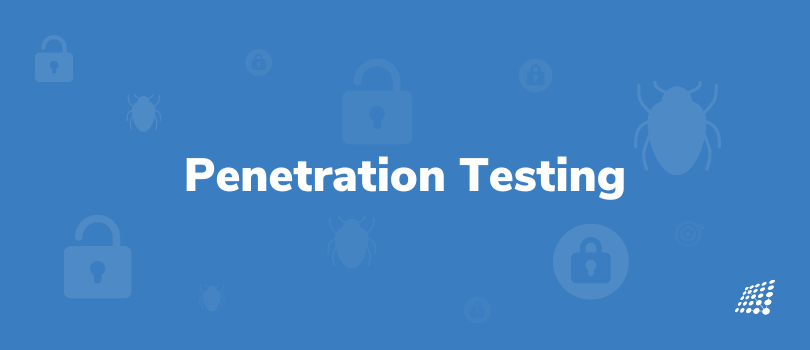Why Is Penetration Testing Crucial?

Do you know what is a penetration test or have you ever heard about penetration testing? It’s also known as pen testing or ethical hacking. Do these terms seem familiar to you? If you value your cybersecurity and making sure hackers are kept at bay, then turns out, you must sit up and take notice!
What is the penetration testing process all about? Are there penetration testing types? What is penetration testing for web application? We’re sure you have many questions in your mind. To answer all of these questions and more, here is everything you need to know of why penetration testing is crucial.
What is a penetration test?
A pentest is a set of authorized cyber-attacks that makes it easy to discover and verify the vulnerabilities in an information system. It’s a security process that understands and judges your computer system’s applications. Against what you may ask? Well, against vulnerabilities and proneness to threats that involve cyberattacks and hackers.
Penetration testing as a service is a legal attempt at gaining access to your protected computer systems or networks, often conducted by a third-party organization. The test aims to identify security vulnerabilities and then attempt to successfully exploit them to gain access to the network or computer system. A few instances of vulnerabilities are design flaws, software bugs, and configuration errors.
What are the types of penetration testing?
There are two common types of penetration tests performed: Black Box and White Box penetration testing.
Penetration testing black box involves no prior knowledge of the corporate system. No information at all is given to the third-party tester. This is often the most preferred test as it is an accurate simulation of how an outsider or hacker would see the network and attempt to break into it.
A white box test, on the other hand, is when the third-party organization is given full IP information, network diagrams and source code files to the software, networks, and system, in a bid to find weaknesses in any of the available information.
What are the steps to penetration testing?
The security defenses of an organization can be tested using automated and manual procedures in a good penetration testing program. To know how penetration testing is done, pay attention to the following seven steps. All of these steps to penetration testing are key when carrying out this procedure:
- Information Gathering: Information gathering is the first of the seven steps of a penetration test. It is all about defining which systems should be tested and how to conduct a pentest.
- Reconnaissance: In this step, a checkup of the systems for weaknesses is performed. Here, we also determine attack vectors.
- Discovery and Scanning: The information gathered is utilized to carry out discovery procedures to identify things such as ports and services that were accessible for targeted hosts, or subdomains, and available for web applications.
- Vulnerability Assessment: At the vulnerability assessment stage of how penetration testing is done, an analysis is carried out to learn more about the environment and find any potential security holes that would allow an outside attacker to access the environment or technology under test. However, you need to remember that a penetration test should never be substituted for a vulnerability assessment.
- Exploitation: During this stage, skilled penetration testers validate, attack, and exploit vulnerabilities using manual methodologies, human intuition, and their backgrounds after analyzing the findings from the vulnerability assessment.
- Final Analysis and Review: At this stage, creating a report that includes a management summary and technical information is vital.
- Utilize the Testing Results: At the end of the steps to penetration testing, thorough descriptions of how we began the testing, discovered vulnerabilities and exploited them are included in this report. The scope, methods, results, and correction suggestions for the security testing are also included.
Tools for Pen Testing:
There are a variety of tools for pen testing, each of which offers a different set of capabilities. Here are some of the most popular penetration testing tools:
Port scanners: During the reconnaissance phase, potential attack pathways can be identified. A port scanner can discover open ports and provide information on operating systems (OS) and programs that use network access.
Vulnerability scanners: Application vulnerabilities and configuration errors can be found using vulnerability scanners. A pentester can locate an exploitable vulnerability for first access by using the information produced by a vulnerability scanner.
Network sniffers: Network traffic can be gathered and analyzed by network sniffers. A pentester can use a network sniffer to find running apps and then search the network for sensitive information or exposed credentials.
Web proxy: Pentesters can use a web proxy to intercept and modify traffic between their browser and the organization's web server. Finding and exploiting HTML application flaws allows the tester to carry out attacks like XSS and cross-site request forgery (CSRF).
Password cracker: Pentesters can use password crackers to find weak passwords on a network. Password hashes are used by attackers to increase or elevate their privilege levels. A password cracker helps Pentesters determine if weak passwords are putting the network at risk.
Which are the most popular automated testing tools?
There are various simple and complex pen testing tools available to perform tasks. Since automated penetration testing tools open source are included and because many of them are open source, any security team can use them to investigate, attack, and report on their IT environment. Here are some top selections for network scanners, password crackers, and pen testing frameworks among the most popular automated testing tools.
- Nmap
- Wireshark
- Jok3r
- Legion
- Zed Attack Proxy
- Sqlmap
- Ncrack
- Burp Suite
- Metasploit
Penetration testing for a web application
Penetration testing for web applications involves simulating unauthorized attacks from the inside or the outside to acquire critical information. Web penetration enables customers to assess the possibility that a hacker will gain access to their data over the internet, as well as the security of their email servers and the web hosting site and server.
These kinds of unauthorized attacks, which can be conducted either internally or externally on a system, reveal information about the target system, identify weaknesses, and helps in discovering exploits that could really compromise it. Penetration testing serves as an important system health check that alerts testers to the necessity of corrective and security measures.
What are the benefits of web application penetration testing?
Web application penetration testing has some important advantages that should be considered when developing a security program.
Compliance Requirements: In some businesses, Pentesting is expressly required and Pentesting web applications help to fulfill this need.
Infrastructure: Public-facing infrastructure includes DNS servers and firewalls. Any infrastructure modifications could leave a system open to attack. Web application penetration testing identifies potential real-world attacks on these systems.
Identifies vulnerabilities: Before an attacker does, web application Pentesting finds flaws in apps or weak points in infrastructure.
Security Policies: Web application Pentesting checks for any flaws in current security precautions.
You can also conduct penetration testing in AWS. In this case, a detailed vulnerability assessment and penetration testing is done for your implemented AWS infrastructure solutions. It makes it easy for companies to recognize and tackle security vulnerabilities. The result? A powerful security framework that safeguards your online assets against cyber criminals.
To know more about what vulnerability assessment vs penetration testing is all about and to secure your systems with our Quality Assurance and UAT services, get in touch with our experts!

At the Heart of SJ Innovation: How we Coordinate our International venture

FRIDAY FUN ACTIVITY : A MUST AT EVERY WORKPLACE


